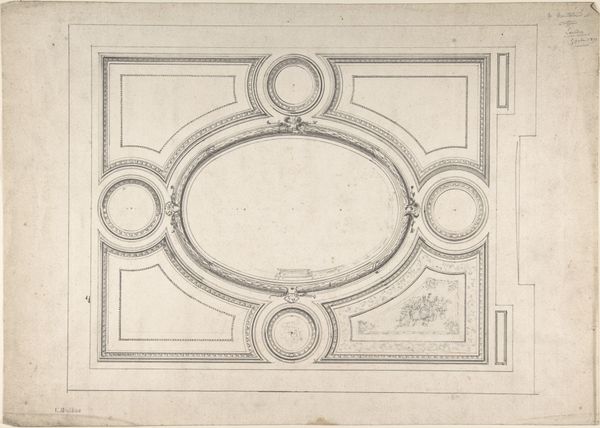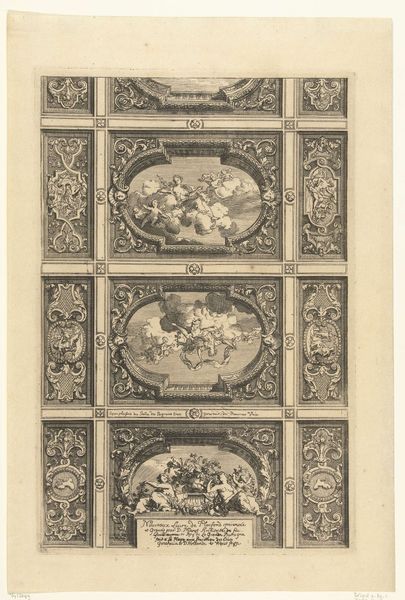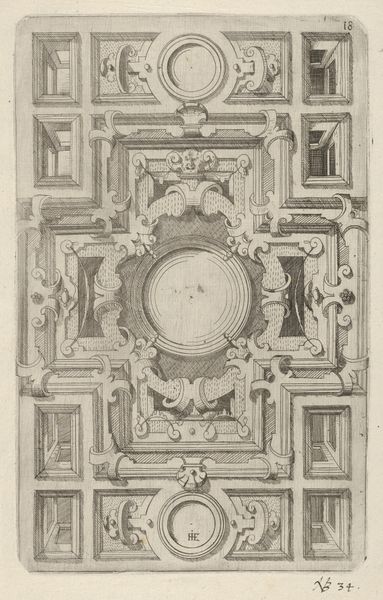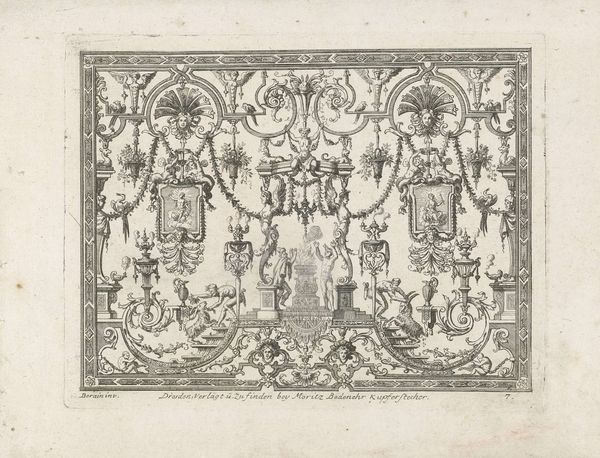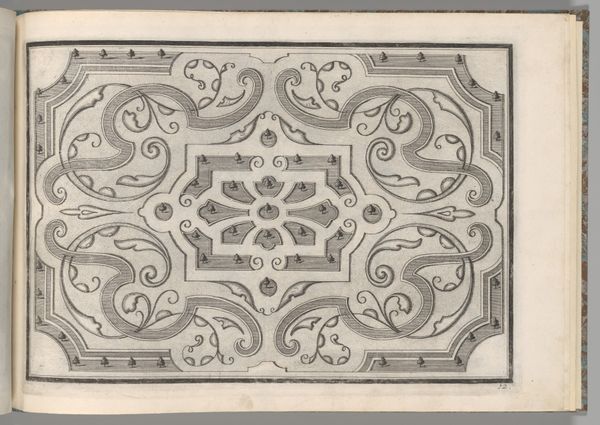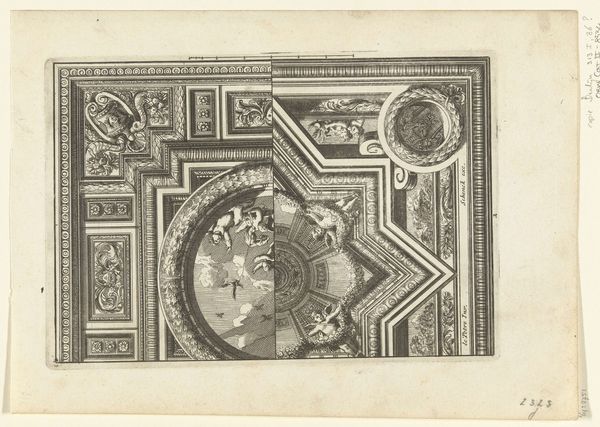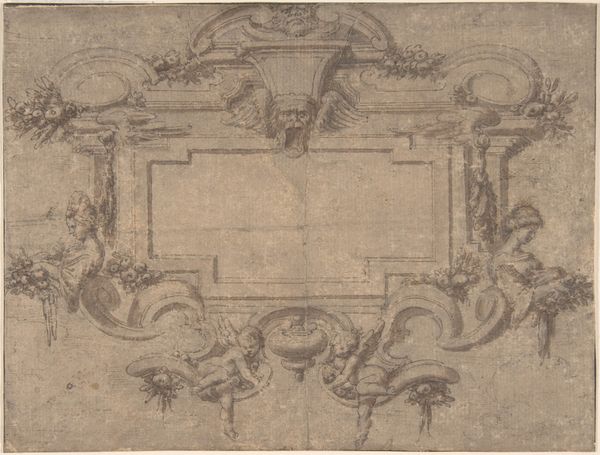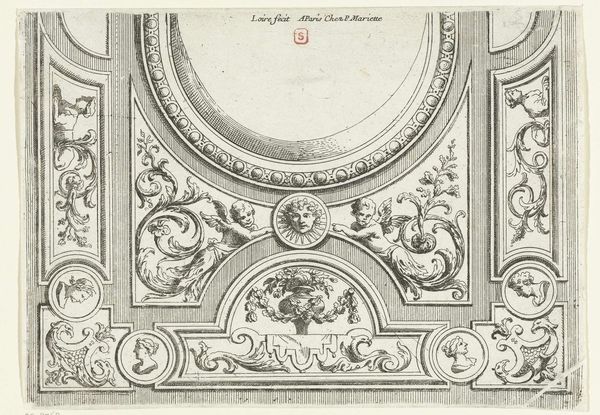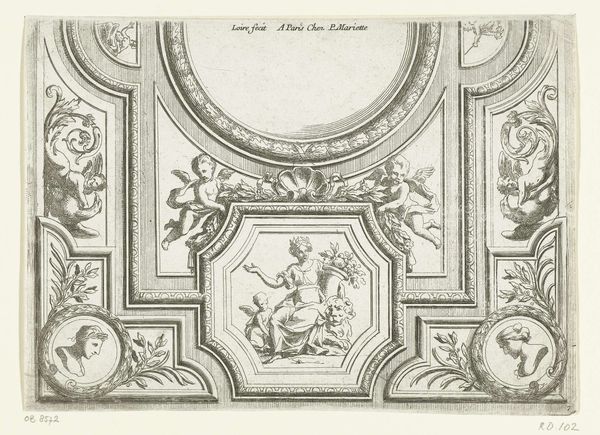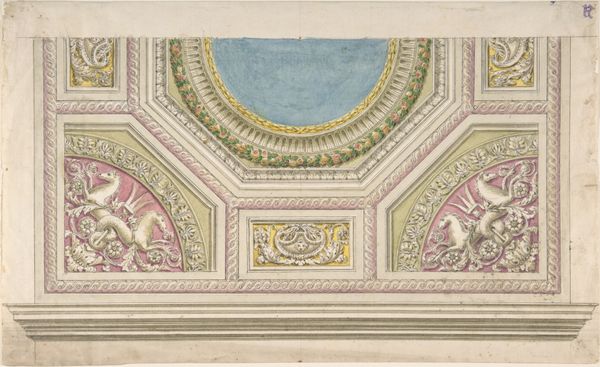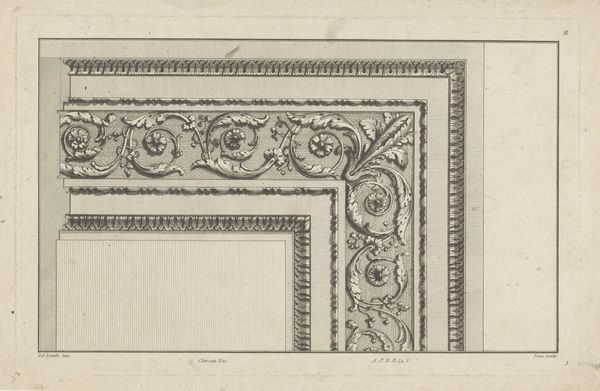
print, engraving, architecture
#
baroque
# print
#
geometric
#
line
#
history-painting
#
decorative-art
#
engraving
#
architecture
Dimensions: height 132 mm, width 193 mm
Copyright: Rijks Museum: Open Domain
Curator: The severe geometry gives it such an air of cool authority. Editor: Indeed. We're looking at a print titled "Plafond met achthoekig paneel," or "Ceiling with Octagonal Panel" by Jean Lepautre, created before 1667. This engraving is currently housed here at the Rijksmuseum. Curator: Lepautre, a highly regarded decorative artist working in the Baroque style, clearly caters to elite tastes in this composition, wouldn’t you agree? The architectural details give it a classical appearance but these mischievous putti on either side definitely add a playful sensuality. Editor: Absolutely, but Lepautre was working within very specific patronage structures and political contexts, it’s important to understand the culture around the consumption of decorative art. Prints such as these were highly valued among architectural artisans. They informed the design and aesthetic tastes that legitimized those holding economic and political power. Curator: I find it compelling to consider the role of cherubic figures specifically. What does it signify that these childlike characters populate architectural engravings meant to guide interior design? Are they representative of a more innocent view of childhood or a way for viewers to tap into their more sensitive sensibilities? Editor: Interesting, and, to an extent, a question that gets to the very heart of the political messaging. By infusing potentially oppressive ideologies with an aesthetic of lightness, perhaps of divine joy, those power dynamics became a little less onerous, less visibly brutal. After all, this was an era where visual language, ornament, even furniture became extensions of soft power and governance. Curator: So, the decorative nature of the piece belies its crucial position within larger ideological and governmental systems. Editor: Precisely. Understanding such dynamics in architectural representations illuminates larger trends across visual and material culture during that period. It's really a beautiful way to consider that dynamic. Curator: This dialogue certainly shifted how I viewed this piece; it's wonderful how studying such an unassuming engraving can reveal complex networks of power and cultural values.
Comments
No comments
Be the first to comment and join the conversation on the ultimate creative platform.
